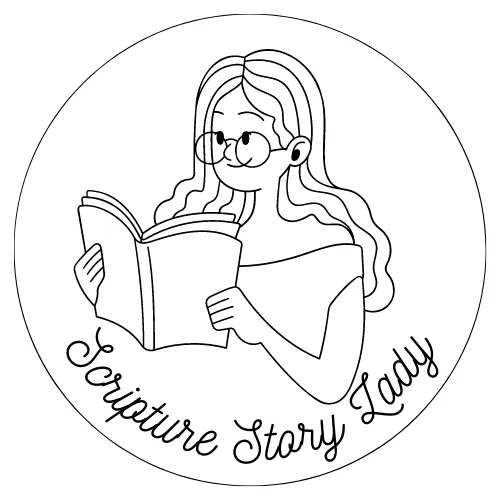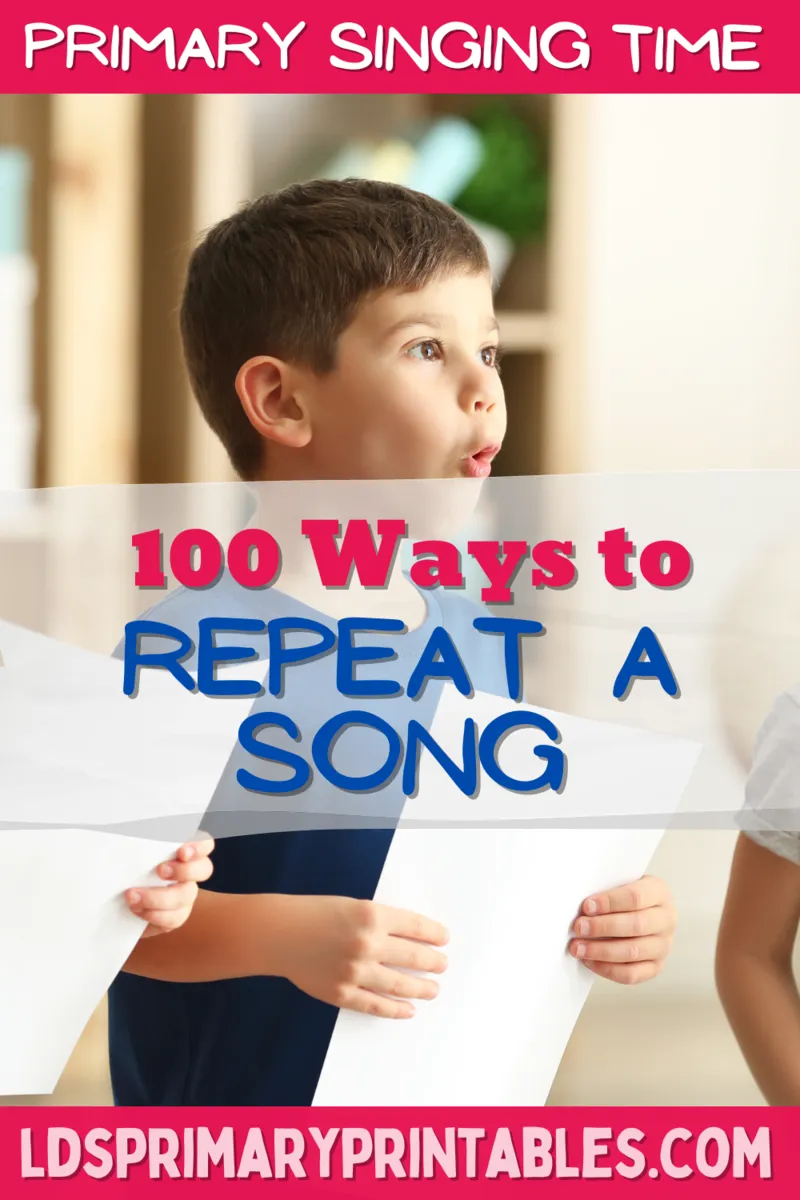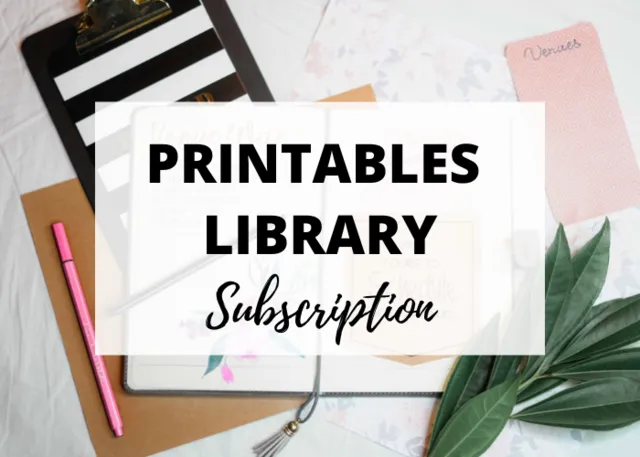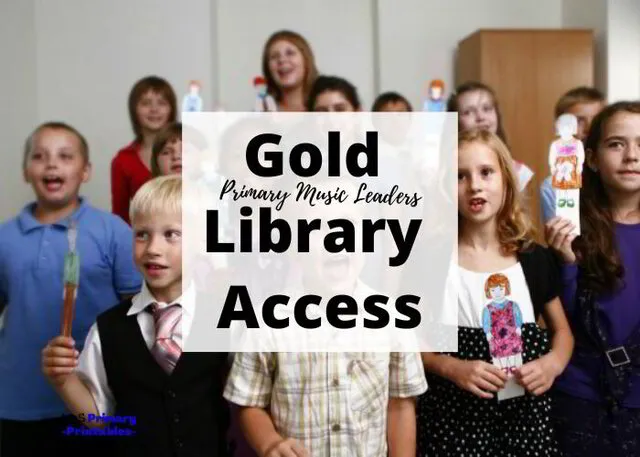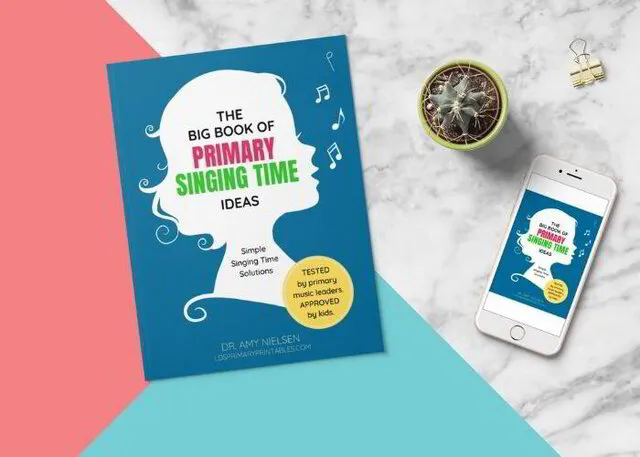100 Ways to Repeat a Song!
Keyword Topics: lds primary songs, lds childrens songbook, lds primary song book, primary music leaders, lds primary singing time ideas, primary chorister, lds chorister, lds primary chorister, primary music, ways to repeat a song, elementary music education, lds primary singing time, lds primary, lds primary music, lds singing time ideas, primary songs, lds primary printables
Whether for LDS primary singing time, elementary music class, kids choir rehearsals and more, You'll never run out of ideas with this fabulous list of 100 ways to repeat a song!
Children learn songs best by repeating the complete song over and over (for longer songs, repeat a chorus or verse over and over instead of the entire song). The following are strategies for repeating a song, keeping it engaging every time, and exploring musical and other concepts in the process.
1. Add actions
Be creative. Develop actions that go along with specific words or phrases. You might use sign language, if you know it. Let the students develop actions.
2. Count lyrics
Count and identify specific words, rhymes, phrases, alliterations, etc. Ask the students to count how many times they hear a specific word or type of word (e.g., words beginning with 's' or words that rhyme with 'door'). Sing the song, then call on students to share their guesses. Don't say 'yes' or 'no'; simply sing the song again and double check as a class.
3. Replace lyrics
Replace words with sounds, actions, or silence. You could even sing the entire song or portions of the song on a neutral syllable (la, la, la). In addition, it is engaging and can develop inner hearing to have a signal for turning the sound on and off; of course, the song continues while the sound is off.
4. Follow/arrange words or map
Give each student a copy of the lyrics or provide the lyrics projected at the front of the class. Track individually or by having one student point to the lyrics. Or, develop a series of images to remind students of the lyrics. Specific lyrics could be blocked out to memorize the song. Also, students could identify (by performing a specific action) parts of speech (nouns, verbs, etc.) or expressive devices (e.g. alliteration).
5. Play the beat or the rhythm
The beat stays the same throughout the song; it's the underlying pulse--the part that we dance to. The rhythm consists of the patterns made by the lyrics (each syllable). Show the beat or the rhythm of a song using body percussion (pat, clap, stomp, snap, etc.), movement (e.g., walk the beat), or rhythm instruments (can be home-made). For variety, change body percussion, movement direction or type, or instruments on different phrases.
6. Show the melodic contour
Show the melodic contour (the relative height of pitches) with bodies (finger, thumb, belly-button, head, etc.). Draw the melodic contour on individual pieces of paper or on the board. Try to follow the contours others have drawn.
7. Add accompaniments
Add repeated beat or rhythm patterns with voices (additional lyrics), body percussion, movement (make up a dance), or instruments. An accompaniment is more than simply the beat. It is a repeated rhythm pattern that accompanies the song. Use a drum circle (overlapping repeated patterns) to develop a groove to be used as an accompaniment for songs, poems, times tables, etc.
8. Change the song
Make up new lyrics (songs-that-teach). Vary the tempo, volume, pitch, or tone quality (different voices like a duck, bear, mouse, etc.). For singing games, make up new ways to play the game alone or with others.
9. Discuss the meaning or context of the song
Talk about or research the meaning of specific words or phrases, events mentioned in or associated with the lyrics, or other contextual factors (history, culture, social interaction, etc.).
10. Combine ways
Do two of the above activities at the same time. For example, make up new lyrics and explore the beat/rhythm or add accompaniments. Or, have some participants do one thing while others do another thing. Sing the song or perform the actions in small groups or as solos. Sing the song without the leader/teacher. Be creative. However, it is important to stick with one way of doing things for awhile and transition gradually to a new way of repeating the song so that students don't become confused.
Lyrics
1. Add actions to lyrics
2. Replace lyrics with sounds
3. Replace lyrics with actions
4. Replace lyrics with silence
5. Identify how many times specific words are sung
6. Identify rhyming words in the lyrics
7. Identify events in the lyrics
8. Discuss what specific words might mean
9. Discuss what the song is about
10. Change the lyrics
Singing
11. Listen to a live or recorded performance of the song
12. Join in singing
13. Sing without the teacher
14. Sing in small groups
15. Sing solos
16. Sing in a microphone
17. Record the singing
18. Sing parts of the song with inner hearing (follow a cue)
19. Sing the entire song with inner hearing while performing actions
20. Sing on a neutral syllable
Beat & Meter
21. Show the beat while singing
22. Show the beat while listening
23. Show the beat through movement
24. Show the beat through body percussion
25. Show the beat with props (balls, hoops, etc.)
26. Play the beat on an instrument (drums, rhythm sticks, etc.)
27. Copy how someone else is showing the beat
28. Show the micro-beats, macro-beat, or every other beat
29. Show the meter with different levels of body percussion
30. Conduct the pattern
Rhythm
31. Tap or clap (etc.) the rhythm
32. Play the rhythm on an instrument (drums, rhythm sticks, etc.)
33. Combine beat actions with rhythm actions (clap the rhythm while walking)
34. Half of the class do one thing while the other half does a different thing
35. Identify specific rhythms in the song
36. Do actions on or play specific rhythms as they occur in the song
37. Guess the tune from the rhythm
38. Say all or parts of the rhythm using solfege
39. Clap the rhythm from rhythm notation
40. Write the rhythms (dot the rhythm in boxes)
Melody
41. Show the melodic contour (with hands, etc.)
42. Identify highest or lowest notes with actions, etc.
43. Draw the melodic contour
44. Sing all or parts the song with solfege syllables
45. Sing all or parts of the song with solfege hand signs and/or hand staff
46. Sing all or parts of the with solfege arm signs
47. Adapt solfege hand and arm signs with a partner or as a class
48. Guess the tune from solfege
49. Play the song on a musical instrument
50. Sing the tune from melodic notation
Harmony
51. Sing the song with harmonic accompaniment (incl. recordings)
52. Play a harmonic accompaniment from a chord chart
53. Improvise rhythmic accompaniments (rhythmic, melodic, harmonic)
54. Sing as a round
55. Sing as a partner song
56. Add spoken ostinatos
57. Add sung ostinatos and descants
58. Add an introduction or coda
59. Write rhythmic accompaniments in box notation
60. Arrange the song
Expression
61. Have a director determine loud and soft
62. Write in dynamics as a class or individually
63. Sing in a different timbre (like a mouse, nasal, opera, etc.)
64. Play “follow that timbre” by sounding like the one-who-is-it
65. Sing the song sadly, happily, etc.
66. Explore different tempos (fast and slow)
67. Speed up or slow down
68. Act out or dramatize a part
69. Change the key
70. Let individual students choose the beginning pitch
Form
71. Change the beat placement on each phrase
72. Demonstrate phrases through movement
73. Follow a contour map for phrases
74. Follow an icon map for phrases
75. Follow a movement map for phrases
76. Draw a map of the song while singing it
77. Follow the maps of other students
78. Sing while looking at a sequence chart or book
79. Place rhythm or melodic maps in correct order
80. Re-arrange the parts of the song using an icon map
Movement
81. Develop a new way to play the game alone
82. Develop a new way to play the game with a partner
83. Develop a new way to play the game in a group or as a class
84. Make up a circle dance
85. Make up a line dance
86. Make up a hand-clapping game or hand-jive
87. Make up a movement sequence with props
88. Sing the song in a different body position (lying down, for example)
89. Accumulate actions in a song
90. Use the same movement sequence for a different song
Listen & Discuss
91. Take turns being an audience member or a performer
92. Listen to a recording of the song
93. Give feedback
94. Develop rules for games as needed
95. Talk about who might sing this and why
96. Discuss the historical context for the song
97. Discuss the cultural context for the song
98. Adapt the song to another subject area (songs-that-teach)
99. Teach the song to someone else
100. Figure out another way to repeat the song . . .
Credit: VinceBates
WAIT!...
WANT ACCESS TO 100+ PRINTABLES? Join the Printables Library.
WANT GOLD LEVEL LIBRARY ACCESS TO AN ADDITIONAL $1k in printable resources?
Hello and welcome to LDS Primary Printables. I'm so excited you are here! LDS Primary Printables provides Come Follow Me, Gospel Topics, Primary Events, and Primary Singing Time Resources for Families, Primary Teachers and Primary Music Leaders.
--------------------------------------------
Join the mailing list for updates, freebies & more!
